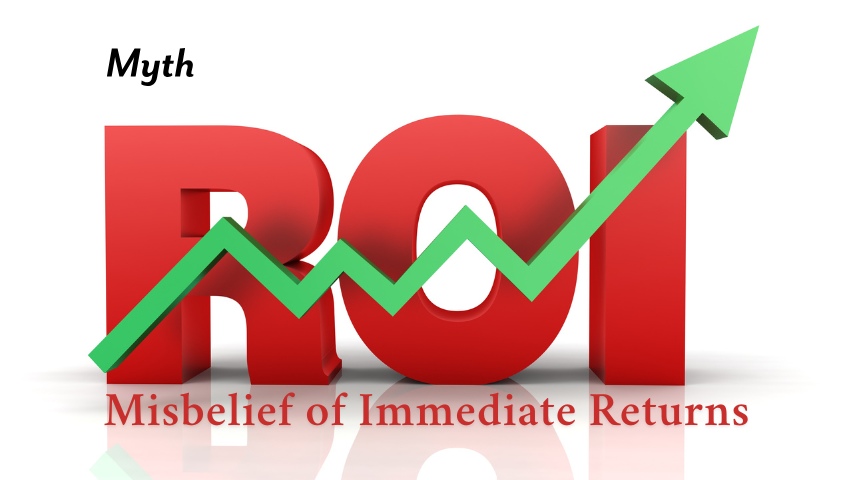The stock market can be a complex labyrinth, often filled with jargon, numerical valuations, and an array of analytical tools that can intimidate even the most seasoned investor. Among the many facets of stock investments, *stock valuation* stands as a pivotal, yet frequently misconstrued subject. Many individuals, including investors, traders, and market analysts, often fall prey to myths surrounding stock valuation, believing they understand its intricacies when, in fact, they may not. This article will peel back the layers of commonly held beliefs about stock valuation, shedding light on the facts that every investor should know.
The significance of understanding stock valuation lies in its critical role in investment decisions. Aspiring investors might equate valuation to the actual *affordability* of a stock—leading them to categorize stocks as either cheap (undervalued) or expensive (overvalued). The implications of these beliefs can lead to misguided investments. Therefore, it is crucial to dispel these myths to empower investors with the skills they need to navigate the stock market successfully.
This comprehensive exploration will delve into five prevalent *stock valuation myths* and provide clarity on each point, equipping you to make informed, data-driven investment choices. It's time to replace misconceptions with knowledge and improve your stock market savvy.

The Myth of Valuation as the Sole Indicator of Profitability
One of the most enduring myths surrounding stock valuation is that it is the only measure that predicts a company’s profitability. Many investors hold the view that if a stock is undervalued, it will eventually yield a return on investment. However, this is not always the case. Several factors influence a company's success, including market conditions, competition, and operational efficiency.
For instance, consider a company with a low *price-to-earnings (P/E) ratio*—often labeled as undervalued. While a low P/E might indicate potential, the company may be struggling with poor management, low demand for its products, or facing competition that could limit growth. Therefore, focusing solely on *valuation metrics* without considering the bigger picture can mislead investors into making hasty decisions. To advocate a holistic approach, look at financial statements, market trends, and the broader industry landscape when assessing a stock's potential profitability.
Technical Analysis as an Indicator of True Value
Another widespread myth is the belief that technical analysis is the most reliable method of determining stock value. Technical analysis involves statistical analysis based on historical price movements and trading volume and is often favored by short-term traders who seek to capitalize on price fluctuations. However, one could argue that technical indicators, while useful for timing trades, do not provide an accurate reflection of a company's underlying value.
For example, take a company with strong fundamentals but unfortunate short-term price momentum. Technical analysis might suggest a sell based on recent trends, while a deeper fundamental analysis could reveal this stock's *true value*. To be a successful investor, you must balance both fundamental analysis (assessing a company’s financial health) and technical analysis (understanding market sentiment).
Believing All High Dividend Stocks Are Always Safe
This myth is particularly attractive to income-focused investors. Many believe that high dividend yields equate to low risk. Indeed, high dividends can be enticing and often signify a mature, stable business. However, even companies with consistent high dividends can encounter financial difficulties that lead to dividend cuts.
Take the oil industry, for example. During market downturns, companies that once offered lucrative dividends might find themselves slashing payouts to preserve cash flow. Investors focusing solely on dividend yield without assessing the company’s balance sheet and cash flow statements may be setting themselves up for disappointment. Thus, it is essential to look beyond the *dividend yield* and evaluate a company's ability to sustain that dividend through various economic cycles.

The Common Misbelief of Immediate Returns
Many novice investors are often inundated with the notion that stock valuation is a quick path to wealth, urging immediate returns on their investments. This perception can lead to hasty decisions based on market volatility rather than sound investment strategies. Stocks inherently require patience and long-term planning; it is unrealistic to expect rapid results based solely on valuation metrics.
A healthy approach is to adopt a long-term investment horizon, combining both valuation understanding with strategic planning. While some stocks may appear undervalued and present a potential for appreciation, it's crucial to factor in the time element as well. Remember the adage—time in the market often beats timing the market. Consistent, informed investing, rather than reactionary trades, will yield more favorable long-term outcomes.
Myths Surrounding Market Sentiment
A pervasive myth is that market sentiment solely drives stock valuation. While investor sentiment can influence stock prices in the short term – often observed during periods of market euphoria or panic – it does not reflect the intrinsic value of a company. Relying exclusively on sentiment can lead to erratic investment decisions.
When stocks rise, fueled by optimistic sentiment, it can distort actual company performance. Conversely, during bearish markets, panic can unjustly lower stock prices of fundamentally sound companies. This discrepancy emphasizes the importance of conducting a thorough *fundamental analysis* in conjunction with awareness of market psychology. By marrying these analytical approaches, investors can better position themselves against the whims of market sentiment.
In conclusion, dispelling these *stock valuation myths* is crucial for all investors seeking to navigate the complex waters of the stock market. By understanding *the facts*, investors can make more informed decisions, apply effective strategies, and mitigate risks associated with common misconceptions. Investing is an art that requires knowledge, patience, and a willingness to learn—don't let myths cloud your judgment! If you are eager to continue learning about effective investment strategies and how to grow your portfolio, I encourage you to read our comprehensive guide on rental property investments or check out our latest Real Estate Report for the most recent insights on market conditions. Remember, the more informed you are, the better your decisions will be in the stock market and beyond. Don't hesitate to reach out to a financial advisor or real estate professional—your financial health deserves expert guidance!
